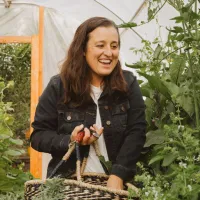
Pollinator Gardens with a Twist: Why Predators Deserve a Spot Too
“Ladies and gentlemen, gardeners of all ages, thank you for joining me today.
I’m here to talk about the oh-so-popular pollinator gardens. You know, the ones that everyone is buzzing about? Bees, butterflies, hummingbirds—they’re the stars of the show, and rightly so. They’re beautiful, hardworking, and essential for your garden’s success. But, and I say this as humbly as a ladybug can, while they’re busy flitting around, sipping nectar, who’s out there doing the real dirty work?”
She clears her throat, adjusting her stance on the podium.“Look, I’m not saying pollinators don’t deserve the attention—of course they do! But when was the last time someone said, ‘Plant dill for the ladybugs’ or ‘Don’t forget a little ground cover for the beetles?’”

Key Takeaways
Design your garden to support pollinators and predators alike.
Include layered plant heights and mass plantings for practical and visual benefits.
Provide blooming plants throughout the season to sustain both groups.
Offer habitats and water sources for all life stages of pollinators and predators.

Garden Design: Setting the Stage for Success
A well-designed garden isn’t just visually stunning—it’s a practical, efficient haven for pollinators and predators alike. The key? Intentional planning.
Planting in Masses Pollinators like bees and butterflies prefer larger patches of the same flower species. These mass plantings save them energy as they can forage efficiently without searching for scattered blooms.
Why it Works: Large groupings of flowers are easier to spot from a distance and allow pollinators to gather nectar and pollen without expending extra energy.
Practical Tip: Aim for clusters of at least 3–5 plants of the same species. For example, plant a patch of blue flax or goldenrod instead of sprinkling individual plants throughout your garden.

Feeding the Heroes: Plants for Pollinators and Predators
Pollinators, from butterflies to bees, need nectar and pollen to thrive. But did you know predators also rely on plants to fuel their work? Hoverflies, ladybugs, and parasitic wasps need nectar and pollen to power their pest-control missions. Here’s how to feed both groups.
Pollinators Are More Than Bees and Butterflies
When we think of pollinators, honeybees and monarch butterflies often steal the show. But there are countless lesser-known pollinators that play critical roles in your garden, like:
Native Bees: These small, solitary bees are often inconspicuous but incredibly efficient pollinators. Look for sweat bees, leafcutter bees, and mason bees.
Moths: Yes, those nighttime flyers are pollinators, too!
Flies: Hoverflies, in particular, are dual-purpose garden heroes. They pollinate flowers and gobble up pests in their larval stage.


Habitat and Hydration: Supporting All Life Stages
Providing food is just one part of the equation. Pollinators and predators also need safe places to live, lay eggs, and overwinter, as well as access to fresh water.
Habitat for Pollinators
Native Bees: Many native bees nest in the ground or in hollow stems. Use plants like rabbitbrush and leave areas of undisturbed soil for ground-nesting bees.
Butterflies and Moths: Provide host plants like milkweed for monarch caterpillars and ladybugs or dill and parsley for swallowtails.
Hummingbirds: Shrubs like serviceberry and chokecherry offer nesting sites and shelter.
Water for All
Pollinators: Butterflies and bees need shallow water sources, such as a tray with pebbles or a small puddle in the soil.

Conclusion: A Ladybug’s Final Thoughts
The ladybug clears her throat, clearly pleased with herself.
“And there you have it, folks. A perfectly balanced pollinator garden that’s secretly—I mean openly—supporting predators, too. Because let’s be honest, those pollinators may steal the spotlight, but they’re not exactly chasing down aphids, are they?
So, plant your milkweed, your sunflowers, and your lavender. But don’t forget a little yarrow for me, some fennel for the hoverflies, and maybe a shady patch for the ground beetles. Together, we’ll keep your garden buzzing, blooming, and balanced.”
Ready to plant for pollinators and predators? Check out our workshops at www.shop.wigglewormgardens.com/events and sow the seeds for a thriving, balanced garden this season. Because in a truly successful garden, every insect has its moment to shine—and its job to do.


970-471-7568
Copyright 2023-2025 Wiggle Worm Gardens
Visit Our Sister companies
Fourth Street Farm: edible landscaping and raised bed garden design and installation
Ground Up: Soil health and compost tea

